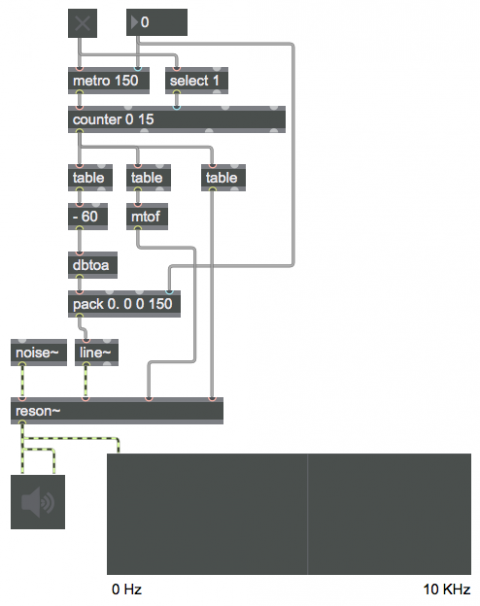Rhythmic filtered noise bursts

This example demonstrates how the settings of a resonant bandpass filter can be altered in a rhythmic way for musical effect. The three table objects each contain 16 numbers, which will be used as the parameter settings for gain, center frequency, and Q in a reson~ object. The numbers in the table objects are looked up by a counter that cycles repeatedly through the table indices, 0 to 15. When you turn on the toggle, it first resets the counter, then it turns on the metro which begins triggering the counter at the designated time interval, every 150 ms. You can double-click on a table to see its contents.
The numbers have been chosen to make an interesting pattern of filter settings, turning the input white noise into a sort of percussion instrument. The gain values are specified in decibels from 0 to 60, and those numbers are then converted into amplitude values for the line~ object, which creates a simple amplitude envelope for each note. The center frequency values are specified as MIDI pitch values, which are converted to Hertz for the center frequency of the filter. The Q values in the right inlet of reson~ give each note a differently focused resonance quality.